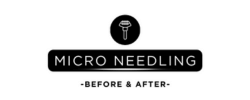As someone who’s deeply passionate about skincare innovations, I’ve witnessed firsthand the transformative power of microneedling. This minimally invasive procedure has revolutionized the way we approach skin rejuvenation, and I’m excited to share my insights about its impressive benefits today.
What Exactly Is Microneedling?
Before diving into the benefits, let me explain what microneedling actually is. It’s a collagen-induction therapy that uses tiny, fine needles to create controlled micro-injuries to the skin. These microscopic punctures trigger the body’s natural wound healing process, stimulating collagen and elastin production. The result? Firmer, smoother, and more youthful-looking skin.
Traditional Microneedling vs. RF Microneedling vs. PRP Microneedling
The world of microneedling offers several variations, each with unique advantages:
Traditional Microneedling focuses solely on creating those tiny punctures to stimulate collagen production naturally.
RF Microneedling combines the traditional approach with radiofrequency energy that heats the deeper layers of skin. This dual-action approach enhances collagen production and can provide more dramatic results, especially for concerns like sagging skin and deeper wrinkles.
PRP Microneedling (also known as the “vampire facial”) incorporates platelet-rich plasma from your own blood. The growth factors in PRP supercharge the healing process and amplify results, making it particularly effective for addressing scars and accelerating skin rejuvenation.
The Remarkable Benefits of Microneedling
1. Collagen Boost for Youthful Skin
One of the primary benefits of microneedling is the significant increase in collagen production. As we age, our natural collagen production declines, leading to wrinkles and sagging. Microneedling essentially tricks your skin into thinking it’s been injured, triggering a healing response that floods the area with fresh collagen. The result is plumper, more elastic skin that appears years younger.
2. Dramatic Scar Improvement
I’ve seen remarkable improvements in acne scarring, surgical scars, and even stretch marks through consistent microneedling treatments. The procedure breaks down old scar tissue while simultaneously stimulating new collagen to fill in depressed scars and smooth out the skin’s surface.
3. Reduced Fine Lines and Wrinkles
Regular microneedling sessions can significantly diminish the appearance of fine lines and wrinkles. The combination of increased collagen and enhanced skin cell turnover leads to smoother, more refined skin texture.
4. Enhanced Product Absorption
One benefit that’s often overlooked is how microneedling creates temporary channels in the skin that allow skincare products to penetrate much deeper than they normally would. This means your expensive serums and treatments can work more effectively after a microneedling session.
5. Minimized Pores
While it might seem counterintuitive, creating tiny holes can actually make your pores appear smaller. The collagen produced around your pores causes them to plump and appear reduced in size.
6. Even Skin Tone and Reduced Hyperpigmentation
Microneedling can help fade sun spots, age spots, and melasma by breaking up pigmented cells and allowing them to be naturally removed by the body.
Safety Considerations and Regulations
It’s important to note that microneedling isn’t a DIY treatment. The depth of needle penetration matters significantly – medical-grade treatments that go deeper than 0.5mm should only be performed by qualified professionals.
Esthetician microneedling regulations vary by state. Some states permit licensed estheticians to perform microneedling treatments, while others classify it as a medical procedure that must be performed by or under the supervision of a medical professional. Before booking your appointment, research your state’s specific microneedling state laws to ensure your provider is operating legally.
The Recovery Process: What to Expect
Microneedling recovery is relatively straightforward, though it varies depending on the treatment intensity. Typically, you’ll experience:
- Redness similar to a sunburn for 24-48 hours
- Possible minor swelling and sensitivity
- Slight dryness and flaking as skin begins to heal
Proper microneedling aftercare is essential for optimal results and minimizing complications. My top microneedling recovery tips include:
- Keep skin hydrated with gentle, fragrance-free moisturizers
- Avoid sun exposure and wear SPF 30+ daily
- Skip harsh active ingredients (retinoids, acids) for 3-7 days
- Let your skin heal naturally without picking or exfoliating
Is Microneedling Right for You?
While microneedling offers tremendous benefits for many skin concerns, it’s not suitable for everyone. Those with active acne, rosacea flares, or certain skin conditions should consult with a dermatologist before proceeding.
The beauty of microneedling lies in its versatility – whether you choose traditional microneedling for general rejuvenation, RF microneedling for more dramatic tightening, or PRP microneedling for accelerated healing and enhanced results, there’s likely a variation that aligns with your skincare goals.
I’ve found that the best results come from a series of treatments spaced 4-6 weeks apart, followed by maintenance sessions as needed. Your skin healing after microneedling improves with each session, creating a cumulative effect that transforms your complexion over time.

